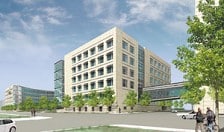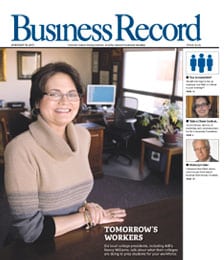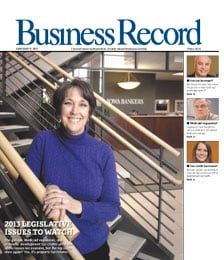LEED 2009 to change green building process

.floatimg-left-hort { float:left; } .floatimg-left-caption-hort { float:left; margin-bottom:10px; width:300px; margin-right:10px; clear:left;} .floatimg-left-vert { float:left; margin-top:10px; margin-right:15px; width:200px;} .floatimg-left-caption-vert { float:left; margin-right:10px; margin-bottom:10px; font-size: 12px; width:200px;} .floatimg-right-hort { float:right; margin-top:10px; margin-left:10px; margin-bottom:10px; width: 300px;} .floatimg-right-caption-hort { float:left; margin-right:10px; margin-bottom:10px; width: 300px; font-size: 12px; } .floatimg-right-vert { float:right; margin-top:10px; margin-left:10px; margin-bottom:10px; width: 200px;} .floatimg-right-caption-vert { float:left; margin-right:10px; margin-bottom:10px; width: 200px; font-size: 12px; } .floatimgright-sidebar { float:right; margin-top:10px; margin-left:10px; margin-bottom:10px; width: 200px; border-top-style: double; border-top-color: black; border-bottom-style: double; border-bottom-color: black;} .floatimgright-sidebar p { line-height: 115%; text-indent: 10px; } .floatimgright-sidebar h4 { font-variant:small-caps; } .pullquote { float:right; margin-top:10px; margin-left:10px; margin-bottom:10px; width: 150px; background: url(http://www.dmbusinessdaily.com/DAILY/editorial/extras/closequote.gif) no-repeat bottom right !important ; line-height: 150%; font-size: 125%; border-top: 1px solid; border-bottom: 1px solid;} .floatvidleft { float:left; margin-bottom:10px; width:325px; margin-right:10px; clear:left;} .floatvidright { float:right; margin-bottom:10px; width:325px; margin-right:10px; clear:left;}
This year, the U.S. Green Building Council (USGBC) will roll out the most sweeping changes to its Leadership in Energy and Environmental Design (LEED) standards for commercial buildings since the rating system was established in 2000.
Over the next few months, architects, contractors, property owners and others involved in the “green” building movement are expected to see significant changes in how projects are qualified as “green” and a new LEED Accredited Professional (AP) certification process, with three levels instead of one. The USGBC also will release new LEED rating systems for retail and neighborhood development.
“The other versions have been kind of like software really, tweak a point here, add a point here,” said Kevin Nordmeyer, a principal at RDG Planning & Design and past chair of the Iowa chapter of the USGBC. “This change has been more comprehensive and has taken longer to develop, too. They’ve given it a lot of thought and review.”
The LEED program has gained more attention over the past few years, with the number of LEED registered projects and people gaining their LEED professional designation in Iowa doubling in the past year alone, Nordmeyer said. The changes are based on years of market research and public feedback, with the USGBC receiving nearly 7,000 comments from its second round of public input last September.
“When they first started the LEED measurement rating system in 2000, it has always been intended to be improved over time as new technologies or new materials (develop) or input from people using the system (is received),” Nordmeyer said.
The standards
The main changes to the LEED rating systems for commercial buildings are a scientifically based re-weighting of credits to focus more heavily on energy-efficiency improvements, bonus points for credits considered most important to specific regions and a more streamlined process that allows for continual improvements to the standards, such as a chance for major new technical developments to be tested, evaluated and incorporated into the criteria.
“I believe they really have done a good job in addressing the memberships and the public’s concerns about the systems in the past,” Nordmeyer said.
The changes will be incorporated into LEED criteria for new construction, core and shell, commercial interiors, existing buildings’ operations and maintenance, and schools. Retail and health-care standards will be aligned with LEED 2009 later in the year; the changes will not apply to homes or neighborhood development at this time.
Developers of projects already registered under an older version of LEED but not yet certified will have the option of sticking with the older version or upgrading to LEED 2009.
New accreditation
This year, the Green Building Certification Institute (GBCI), a USGBC spinoff that handles the professional credentials program, will roll out a new accreditation process and examinations.
The new LEED AP examination system will now include three levels of accreditation to better delineate people’s skill levels. The levels are LEED Green Associate, which shows basic knowledge of green design, construction and operations; LEED AP+, which shows greater depth of knowledge in green building practices and specialization in a particular area; and LEED AP Fellow, a group distinguished by years of experience and a peer review of their project portfolios.
Nordmeyer believes the new system will better distinguish the broad group of professionals, such as architects, engineers and scientists, who are becoming accredited.
Eric Wessels of Simonson & Associates Architects LLC, who is involved in the green rehabilitation of the former Stivers auto dealership at 1717 Ingersoll Ave., agreed and said the improvements seem to “just broaden the opportunity for more people to probably participate in their areas of expertise.”
Changes to the LEED accreditation system will be rolled out in phases throughout the year, with beta testing for the LEED Green Associate and LEED AP Operations and Maintenance exams beginning in February.
“Each version of the exam has gotten harder as it’s moved along, intentionally, I think, to give it more credibility,” Nordmeyer said, adding that this could cause an influx of people taking the LEED AP exam before the new system is in place.
Those already LEED certified must choose to opt into the new system during a two-year period starting June 2009 to become LEED AP+ certified and will be required to complete additional hours of training. Those who obtain their designation from here on out also will be required to take continuing education courses.
The Iowa chapter of the USGBC hosts a couple of LEED training seminars a year, which could help satisfy the new requirement, Nordmeyer said. Higher educational institutions also can have their course offerings reviewed to get GBCI endorsement.
Other changes
Also coming down the pipeline are new LEED rating systems for neighborhood development and retail.
The neighborhood development program integrates principles of smart growth and includes criteria such as location and connection to the greater community, neighborhood pattern and design, and green construction and technology. Nearly 240 test projects have been accepted since early 2007 and the public comment period on the rating system ended Jan. 5.
LEED for retail in new construction and commercial interiors also is going through the final approval process. It will apply to various retail spaces from grocery stores to big-box retailers to restaurants and banks. More than 80 retail pilot project teams have helped develop and refine the program, and the program will be integrated into LEED 2009 this year.
“I think the biggest thing about (LEED),” Wessels said, “is it keeps fitting to the profession as it grows.”
Already the USGBC is working on LEED 2011.








